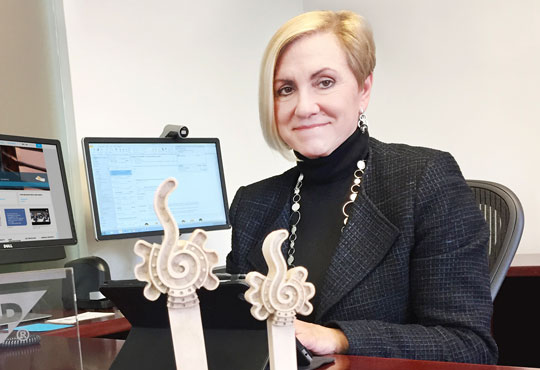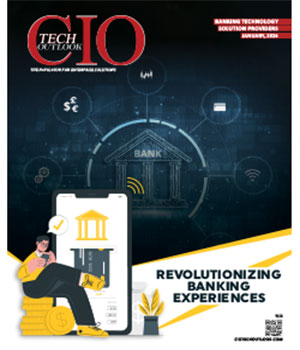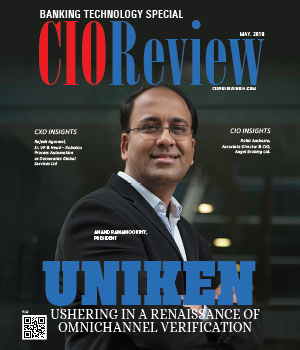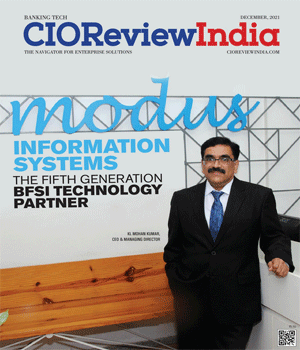
Bringing Greater Efficiency to the International Development Sector
Nuria Simo, CIO, Inter-American Development Bank | Tuesday, 19 July 2016, 10:32 IST
 For a long time, the public sector has been perceived as bureaucratic, and resistant to change. Moreover, it is surrounded by private sector organizations that are able to deliver results and measure their performance faster and more clearly. But this is definitely changing. The opportunity to be part of this change process inspired me to take on the CIO role at the Inter-American Development Bank (IDB) where I could apply the lessons I’ve learned across different industries and sectors and help drive the change forward.
For a long time, the public sector has been perceived as bureaucratic, and resistant to change. Moreover, it is surrounded by private sector organizations that are able to deliver results and measure their performance faster and more clearly. But this is definitely changing. The opportunity to be part of this change process inspired me to take on the CIO role at the Inter-American Development Bank (IDB) where I could apply the lessons I’ve learned across different industries and sectors and help drive the change forward.
Given the current macroeconomic turbulence in Latin America and the Caribbean, there is a pressing need to stay relevant and provide valuable services. For more than 50 years, the IDBhas played a fundamental role in the development of the region, and it is committed to help borrowing countries design and implement solutions that will contribute to improve people’s lives. But these countries struggle with important challenges such as low productivity, existence of inadequate infrastructure, and complex regulatory systems that translates to inefficiencies and low levels of innovation.
We understood that to effectively partner with these countries and help them address their issues, we had to look inward and renew our own processes. We had to be ready to "talk the talk, and walk the walk.”
The deployment of SAP wasa critical part of our renewal strategy. This system enabled us to enhance our operational processes in finance, procurement, budget, and human resources. Through its implementation, we have replaced outdated systems and integrated the workflows of different departments. This integration has eliminated redundancies, improved our data quality, andmade processes more agile. With SAP we have laid a robust, secure, and modern platform to continuouslyimprove the way we work, and in turn, stay relevant and valuable to our partners.
The project had already begun when I arrived as CIO to the Bank, but during this journey, we have learned four important lessons:
1. Technology alone is not the solution to our problems.Sometimes SAP is seen as the solution to all the problems, but what is often forgotten is that the process is long and difficult. SAP is only a tool; and the real value to the business comes in the approach used for the implementation and synchronization for future use. After several SAP implementations in different organizations and industries, I’ve learned that having high expectations and enormous scope could hurt the process. SAP is a complex system and requires a lot of coordination, discipline and good governance.Therefore, it is fundamental to hire the right people, with the necessary experience to move this complex process forward.
2. SAP is a change management project.Before SAP, each organization had its own technology platforms and a specific way of processing its information. The implementation of this sophisticatedsolution represents a great change, and when done effectively, the new system will allow for the transformation of processes, better use of technology, and will assist employees in maximizing their performance. SAP is a tool that promotes high levels of coordination between all players, and every user needs to understand the implication that one small mistake can make to the entire system. A successful implementation requires an inclusive process where all stakeholders understand the consequences, now that every information is accesible to all employees. For someone that is used to prior systems, this represents change, and change can be difficult. Also, as with any other change management project, the implementation of SAP requires strong support from the CEO and top management to drive this change, as well as determine clear goals.
3. Understanding organizational culture is critical. Inspired by Peter Druker, Bill Aulet once said “Culture eats strategy for breakfast, tecnology for lunch, and products for dinner”. I couldn’t agree more. When an organization needs to undertake a major transformation like SAP, the relationship between change management and organizational culture becomes crucial. Change management will happen if culture permits. Organizational culture is a factor that is often underestimated, but in difficult processes like this, the human factor plays a crucial role. To achieve the objective, it is necessary to make use of the existing culture and change behaviors that are critical to the process. In my experience, I’ve learned that choosing the right integrator, which understands the culture of the institution and is able to sync properly with it, goes a long way.
4. Shared knowledge is a big part of the process. The transformation that SAP brings occurs efficiently if everyone is committed. For this to happen stakeholders should understand the process clearly. Knowledge transfer must be intentional and planned from the beginning of the project. This approach will ensure the proper use of the tool, and the necessary engagement from all users. To achieve the learning objectives, it is important to know the talent and level of expertise of each of the players, and understand that everyone learns differently. At the IDB, we have included our Department of Knowledge and Learning from the beginning of the project, coordinating and designing a strategic plan according to levels of understanding and the culture of the organization. Trainings have become part of our daily routine, and with different styles of trainings we ensure that everyone understands the proper use of the tool. By fostering collaboration, and constant communication, we will have created a system where each incident goes straight to the knowledge department, and an exercise gets designed to provide answers, and teaches how to avoid making that same mistake again.We even had a workshop where we taught “SAP-enese”, where new users could learn terminology before using SAP for the first time.
The hard work of our amazing team led us to a successful “Big Bang” launch.On April 6th, 2015, the new system went live, with all functionalities available in 29 countries at the same time.We knew choosing this approach represented a huge challenge, but also brought the best management experience in the long run. We took a significant risk in radically streamlining our systems, but those involved agreed that it was the best decision. Having these functionalities available in all countries now reduces the time to deliver on future improvements.
Today, we process more than 35,000 transactions in SAP every month, and with approximately 2,000 users we have completed more than 350,000 transactions since our launch. The numbers truly speak for themselves and our users keep growing every day. In April 2016, we will launch SAP Human Resources and with it, all of the IDB’s employees will be SAP users. Most of them will perform basic functions in our SAP Employee Self Service, like self-managing personal information and benefits.
This project has changed our mindsets, as we now recognize users as a key part or our continuous improvement cycle. Our constant interaction has helped us understand our needs, develop new solutions, and deploy better trainings. Going forward, as business evolves, we will continue to enhance and refine our processes for aligned and sustained efficiencies using SAP. This is a journey we are now well positioned to take as we continue to work to improve the lives of the people in Latin America and the Caribbean.
CIO Viewpoint
Machine Learning In Cybersecurity: The Risks &...
By Neelesh Kripalani, Chief Technology Officer, Clover Infotech
5 Major Saas Trends To Check-Out In 2021
By Vikas Bhonsle, CEO, Crayon Software Experts India
Artificial Intelligence & The Disruptive Chatbot
By Vishal Sinha, President & CIO, Tranzlease Holdings
CXO Insights
Crafting the Digital Journey in Banking
By Janifha Evangeline
Incorporating Blockchain Capabilities into...




.jpg)
.jpg)





